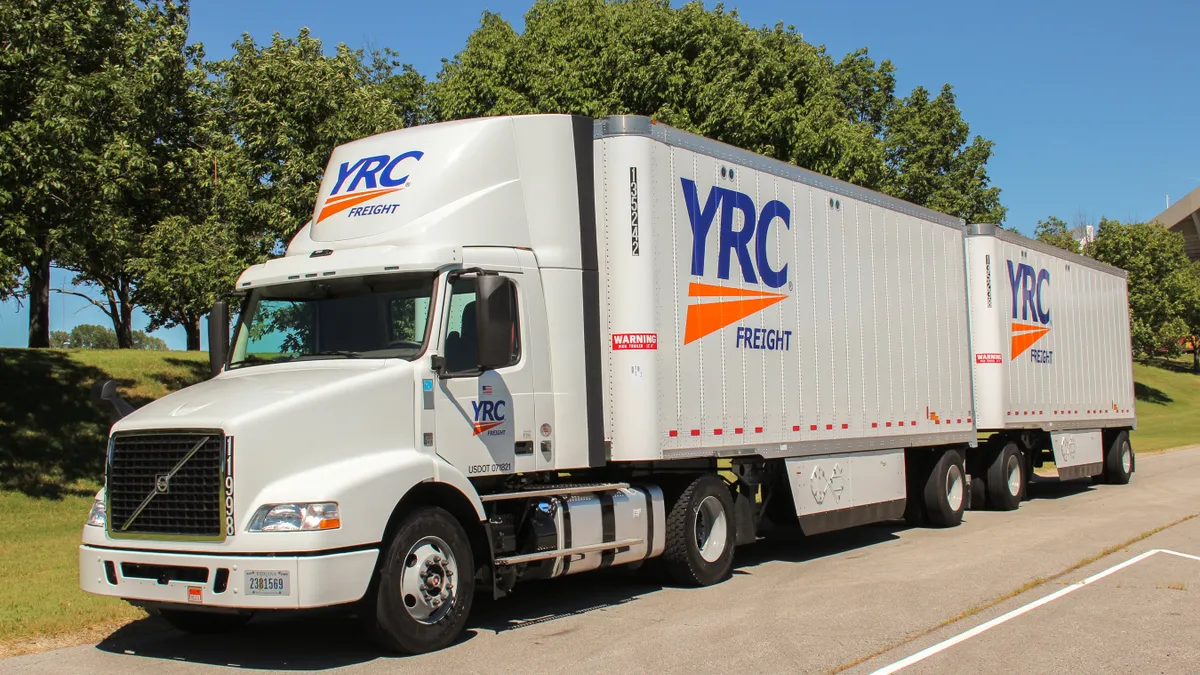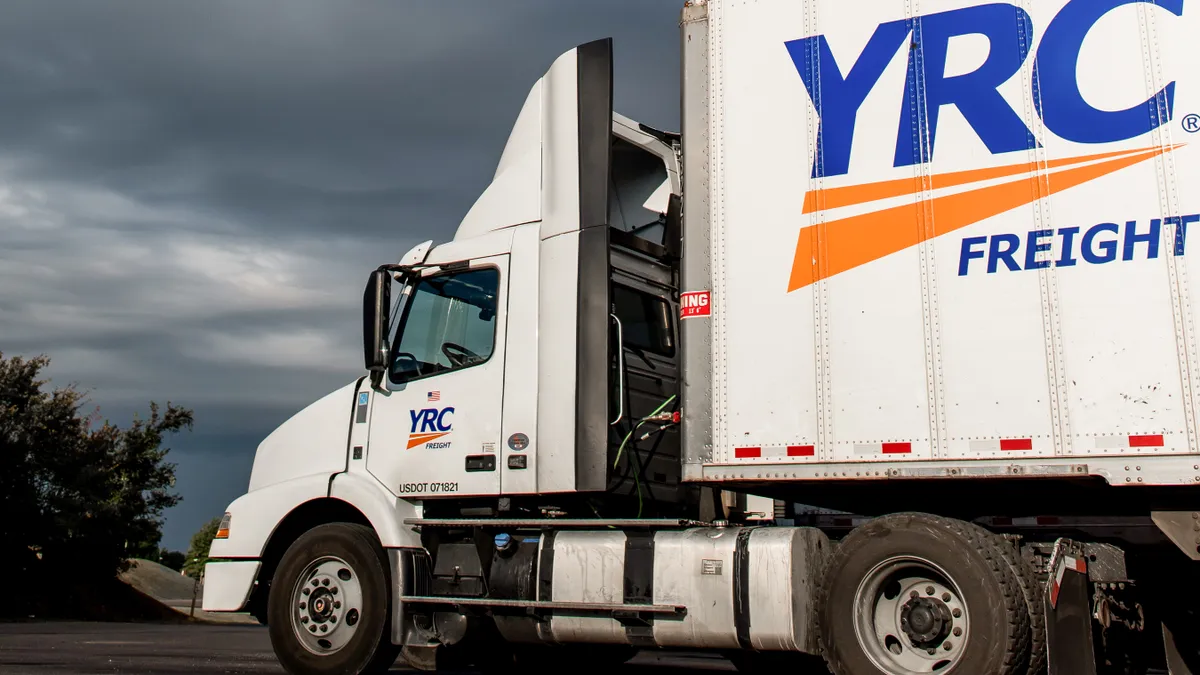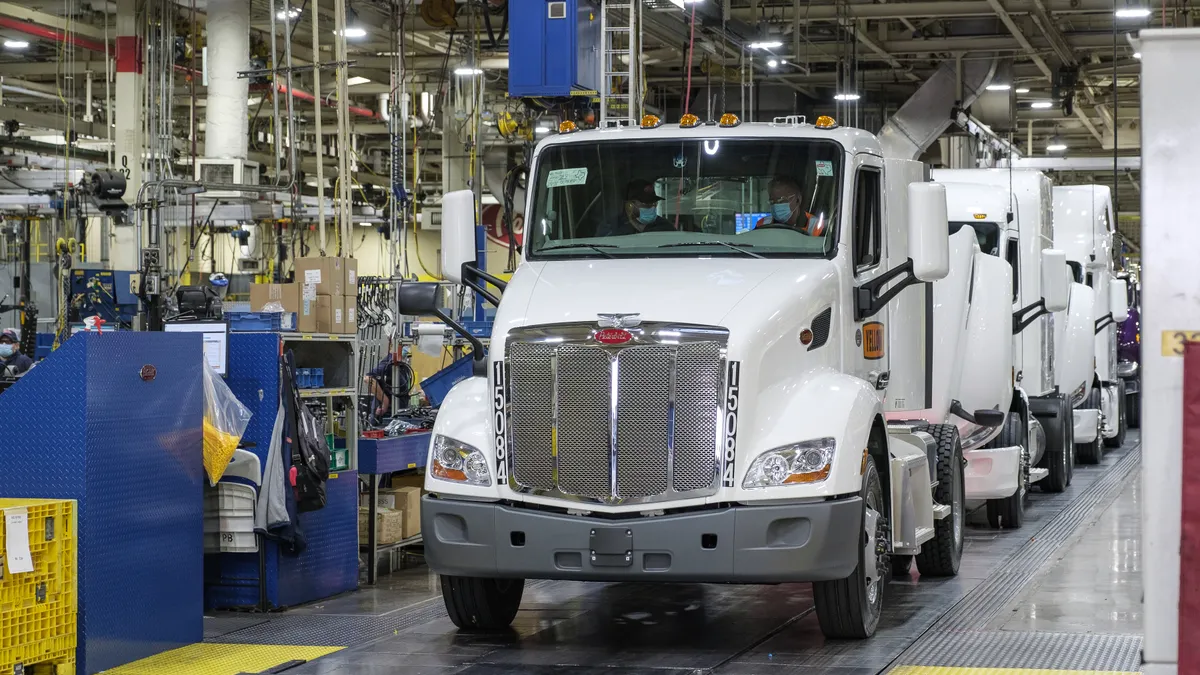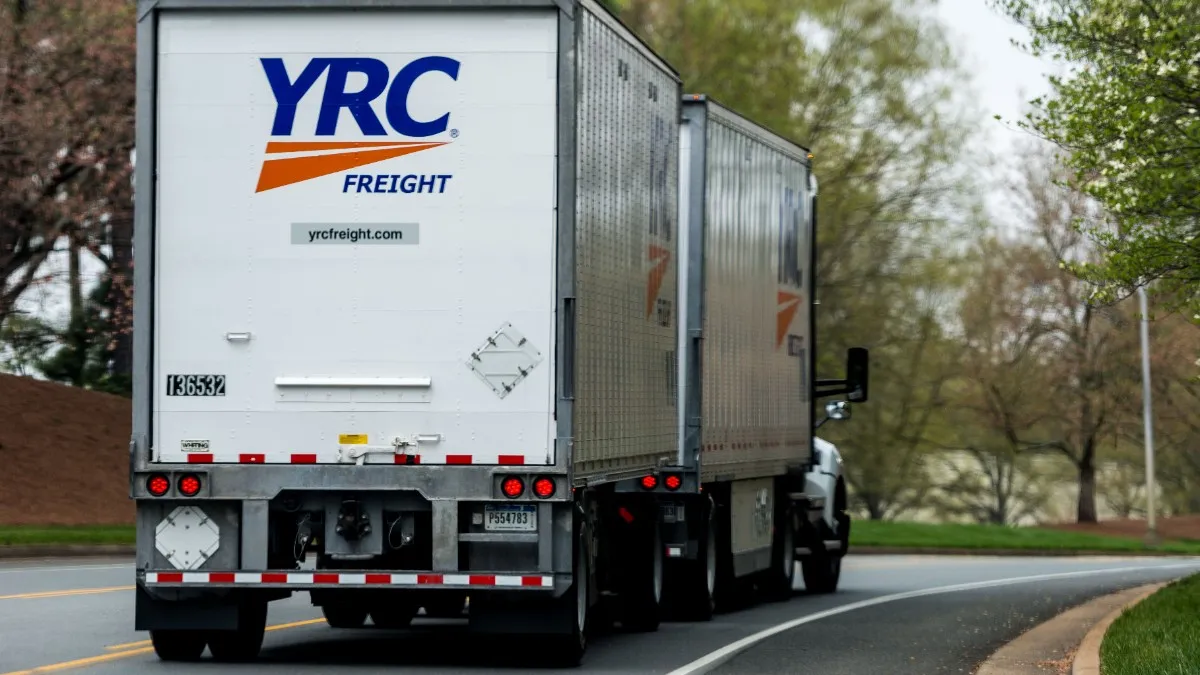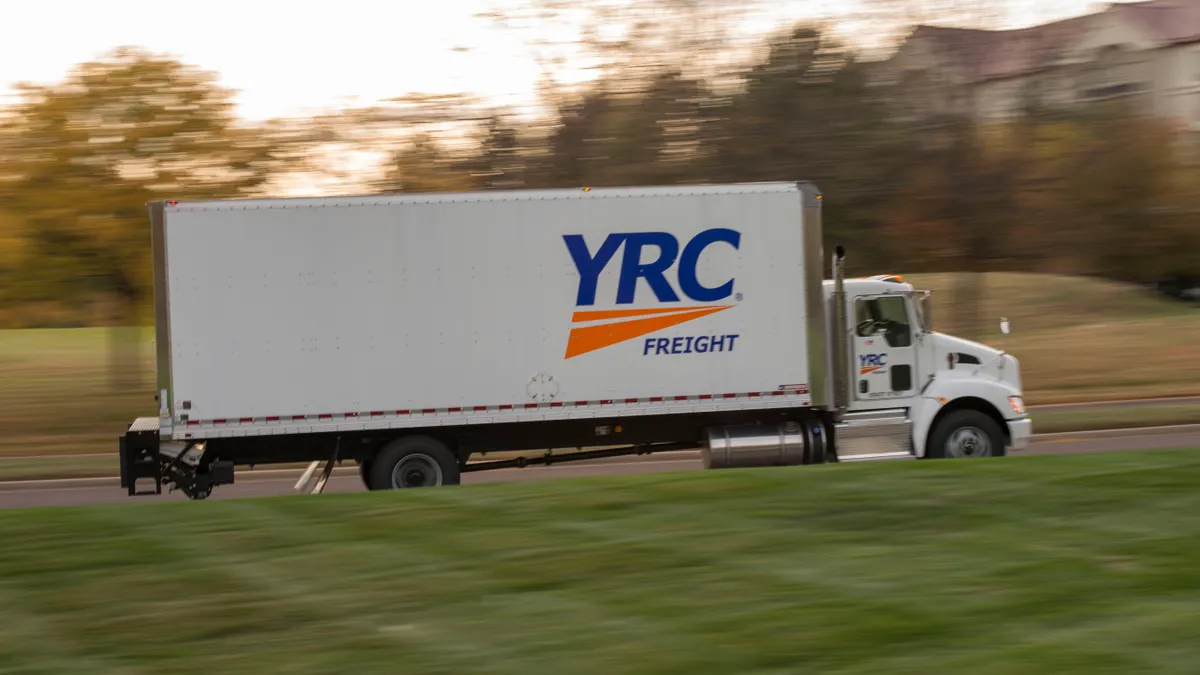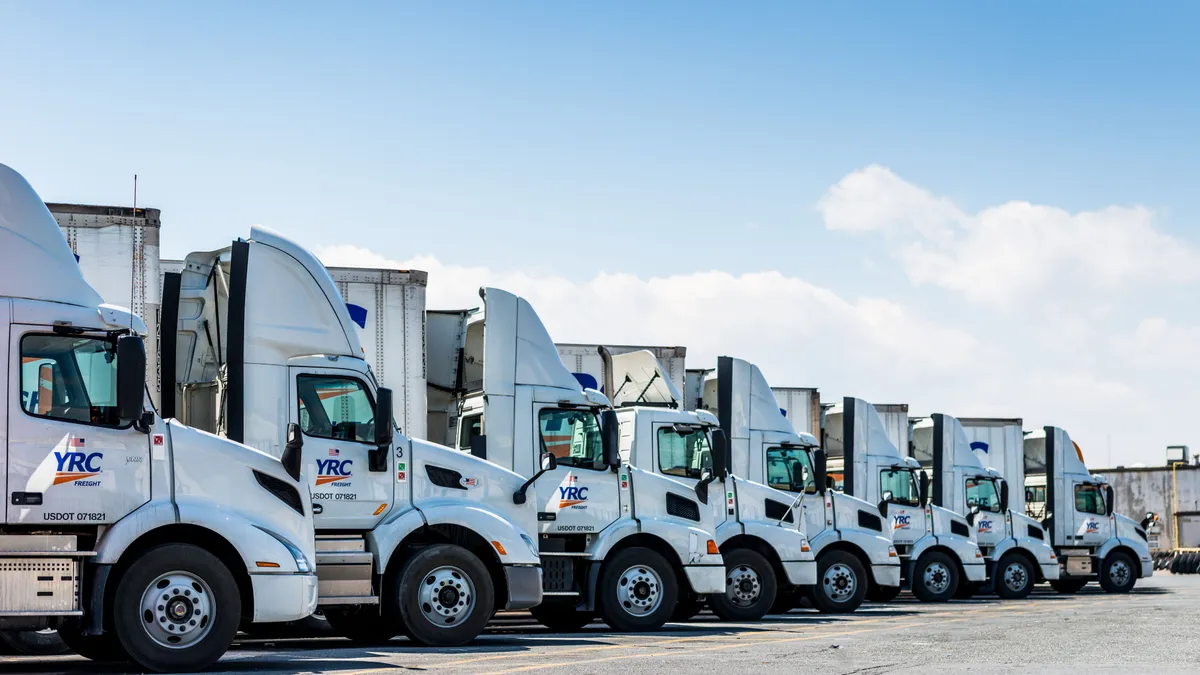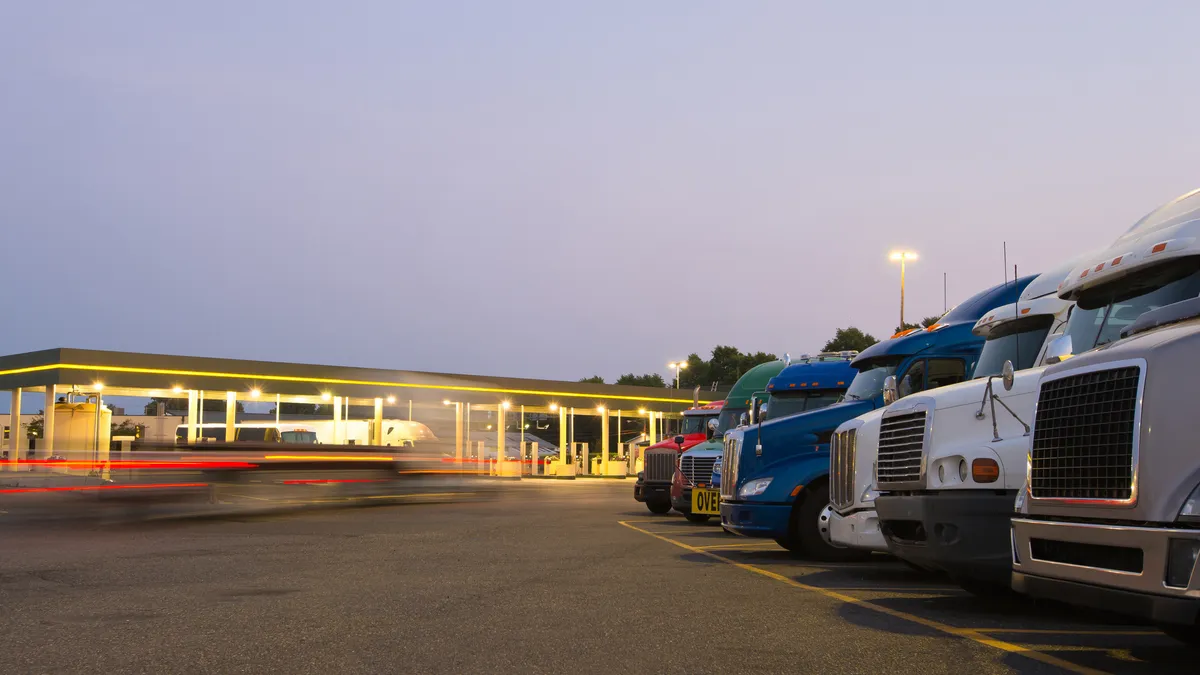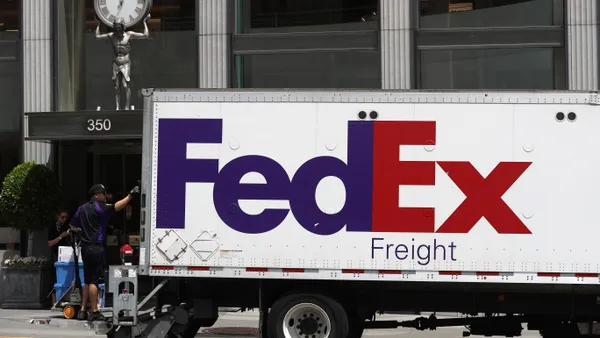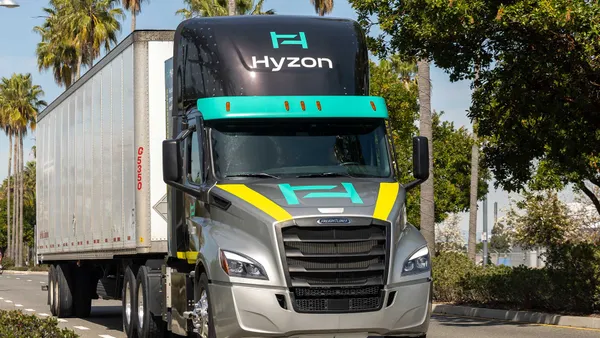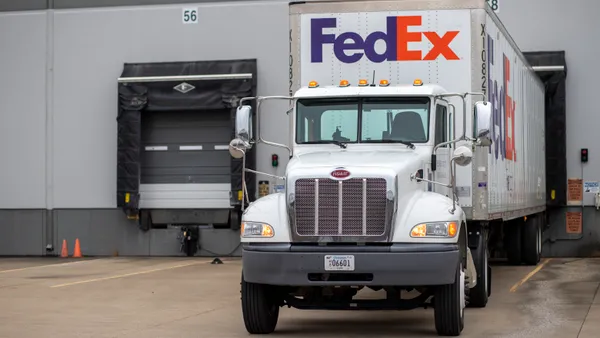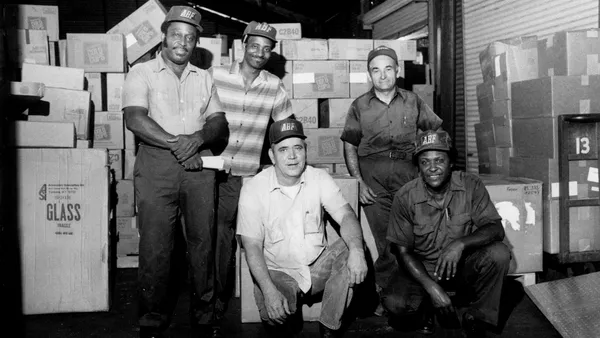Dive Brief:
- YRC, whose name changed back to “Yellow,” is struggling with the driver shortage. CEO Darren Hawkins said during an earnings call Thursday that the lack of labor was frustrating the company’s plan to become profitable.
- Yellow has added signing bonuses, accelerated pay progressions in certain markets and added driver-training schools, COO T.J. O’Connor said. “By the end of March, we expect to have 12 academies in operation around the country,” O’Connor said during the call.
- O’Connor said Yellow will also look inside the LTL firm to convert box-truck drivers and dock workers to Class 8 drivers. O’Connor said those workers are not yet CDL-qualified, but employees who want to take the plunge will be trained to do so.
Dive Insight:
Yellow shook off its YRC name on Thursday and officially declared the company would operate under its former banner. Subsidiary operations will consolidate and the company will strive for profitability. But the company has faced one hurdle after another.
Now, as Yellow adds newer, safer, more fuel-efficient trucks and pares its losses, its biggest challenge is getting drivers in the seats of the new rigs.
Company officials said during the call that limited driver availability would keep its LTL capacity flat but stable, but they would prefer to have more drivers to capture more revenue.
It’s a hurdle most carriers are facing. But for Yellow, it is more critical to get past driver shortages. The firm was close to bankruptcy before the federal government threw it a $700 million lifeline during the initial onset of the pandemic.
The loan has been crucial in the carrier’s efforts to finally address the problems of an aging fleet that, for too long, had not seen replacements of old rigs. Maintenance costs were soaring, and trucks were being pulled off the road for repairs.
Yellow owned approximately 14,000 tractors in 2020. They were twice the age of the industry average, and the carrier was spending at least $10,000 per truck, per year, according to Jeff Kauffman, an analyst with Loop Capital.
Once the federal loan began flowing in, Hawkins said in August that newer trucks, purchased without “leasing headwinds,” would be able to come online quickly, improving fuel efficiency and driving down maintenance costs. By the end of 2020, Yellow added 300 tractors and 1,200 trailers. Yellow officials said during Q1 2021, it will likely acquire more, including 1,100 tractors, 1,900 trailers and 250 containers.
One benefit for the new consolidated Yellow will be servicing clients with one brand name. That will mean fewer trips to clients, and more efficiency.
“In Birmingham, Alabama, for example, where you had Holland and YRC Freight operating separately ... today, they’re operating together,” said Hawkins. “So, rather than having two drivers ... from two of our companies at one customer, we’re able to service that with one driver, one tractor, one set of equipment.”
Yellow’s remarks about the driver shortage and its strategies to mitigate it are echoed throughout the industry, with leaders talking about pay hikes as incentives. On Wednesday, Schneider CEO Mark Rourke told analysts the shortage will cause an “increasingly inflationary driver wage marketplace” in 2021.


